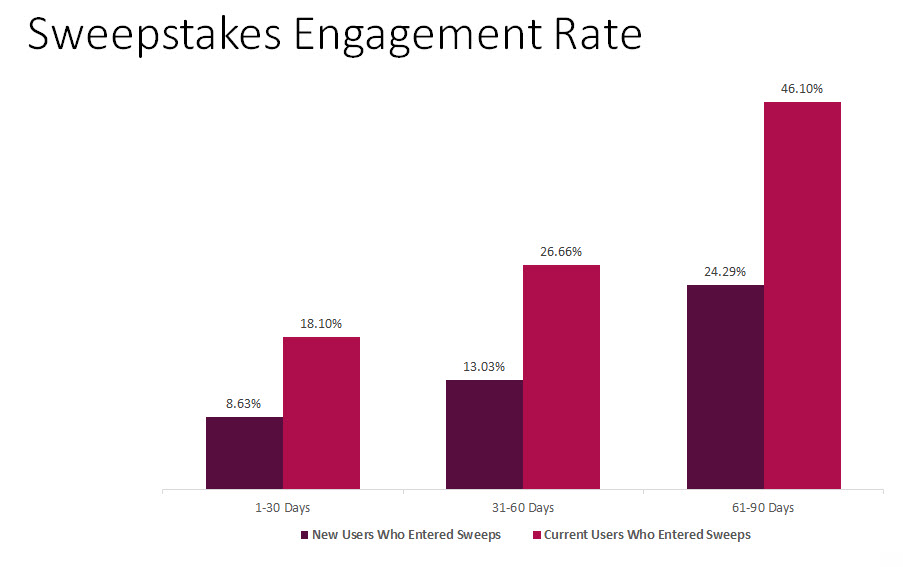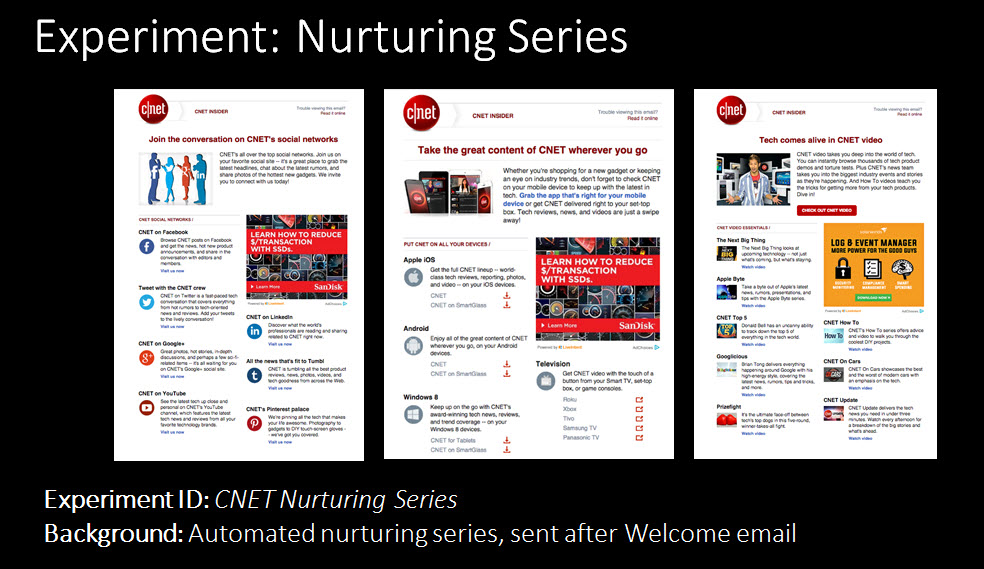Before jetting out to MarketingSherpa Email Summit 2015, Daniel Burstein, Director of Editorial Content, MECLABS Institute, and I took a little trip down memory lane and reviewed some top takeaways from Email Summit 2006.
Of course, it’s exciting to see how some things have changed and laugh at how far we’ve come. In 2006, consumer marketers were warned about Yahoo and MSN Hotmail adding preview panes to email services.
We were using words like “ezines” and “hotlinks.” We assumed email would be dead because of junk mail. We were just getting the hang of using Web analytics and email systems together to track customer value.
While we have come a long way since then, there were some things that have stood the test of time.
Keeping opt-ins actively engaged with email content is key to improving ROI. Don’t have Marketing operate in a silo — work in coordination with not just Sales but also IT to gain the right solutions and tools you need to succeed.
One takeaway caught our eye, as it is something I discussed onstage with Diana Primeau, Director of Member Services, CNET, earlier this week at #SherpaEmail.
In 2006, we heard from David Kreitzer, then Marketing Director, Bella Pictures, and his advice for using sweepstakes to build email lists.
According to David, although sweeps and free bonus offers can dramatically raise email opt-ins, list quality suffers. You may get tons of new names on a list, but they could just be there for the contest.
I’m sure many marketers even now have been advised not to use sweepstakes or contests to build a list.
Fast forward to yesterday, Diana shared how one way CNET builds its list is through sweepstakes and had the numbers to prove that subscribers can stay actively engaged post-contest.
What do we know now that’s different from what we believed in 2006?
It’s simple really: create a relevant experience with users with personalized content to retain them for the long term.
We knew this back then, but our capabilities over the years have grown to allow marketers to leverage the tools and platforms they need to segment, test and optimize an email experience for each subscriber, serving up content that creates a one-to-one relationship.
“Start now. Work with what you have. Measure AND share, not just 1x but ongoing.” Great advice, @macrosmed! #SherpaEmail
— Amy Schamp (@THEschamp) February 24, 2015
Diana spoke at length about her work with CNET’s welcome and nurture campaigns. These emails are sent to new CNET users and offer the array of services including ways to connect with CNET on social, the various mobile apps available and the vast library of CNET-exclusive video content.
But it’s not enough to simply push out messaging and hope it sticks — Diana tested to ensure that new users were not being bombarded with too many emails or too much content in a send.
During the time a new user would be receiving the welcome and nurturing series, they would not receive any other email content from CNET. The goal here was to onboard new users and get them familiar to the brand.
Even the order of the nurturing series mattered. For the three-email series, Diana saw that the mobile email, which was originally second in the series and offered up CNET’s array of ways to connect on the go, was seeing high engagement, so she changed the order to move mobile first.
However, this seemingly minor change meant a significant dip in open rates for two-thirds of the campaign.
“Testing takes time, but it also is a bit like low-hanging fruit. You already have the program; just take the time to optimize it. As marketers, testing should be part of our DNA,” Diana said.
Order matters. Mobile email was highest click through rate, so they swapped it to 1st… & it bombed! #SherpaEmail pic.twitter.com/9LJVYEcAui
— Jessica Best (@bestofjess) February 24, 2015
Retain users with segmented content sends
This is really where Diana is able to retain those users, even the ones who come into CNET for a sweepstakes.
CNET was already sending out a vast array of high-quality content to subscribers, but how could Diana and her team take it up a notch?
By segmenting users based on …
- The newsletters they are subscribed to
- Click and remarketing data
- User profile data
- Site engagement
… Diana set up various tests to see if users receiving segmented content would engage with the content more than unsegmented users.
In one test, Diana took CNET’s “News” subscribers and tested sending them a control email with no personalized content.
In the treatment, those subscribers for “News” who also demonstrated behaviors linking them to “Smart home and appliances” content received a newsletter with both types of content.
This test showed that segmented users clicked through the email much more than unsegmented content sends — an increase of 307%.
What you need to know
Building your email list with sweepstakes entrants can work in your favor if you put the work into creating a first-class user experience with email.
You’re not going to keep everyone, but those who do stay engaged with your brand are worth it to provide an engaging and personalized experience. And of course, always test your messaging and ensure you’re sending the most relevant and effective message to your users.
Love that CNET just reinforced that test results are only relevant to YOUR BRAND. Test to see what works for yours! #SherpaEmail
— Justine Jordan (@meladorri) February 24, 2015
If you liked to learn all of the top takeaways from Email Summit 2015, stay tuned to the MarketingSherpa Email Marketing Newsletter. An event recap with everything you need to know will be published in the coming weeks.
You can follow Erin Hogg, Reporter, MECLABS Institute, on Twitter at @HoggErin.
You might also like
Three Takeaways on Customer-centric Marketing from Email Summit 2015 Media Center [More from the blog]
Social Media Marketing: 7 steps for using contests and sweepstakes to promote your brand [More from the blog]
Viral Marketing: Month-long sweepstakes generates 1,170% ROI and 488% lift in email subscribers [MarketingSherpa case study]
List Growth: 11% increase from sweepstakes for current subscribers [MarketingSherpa case study]








